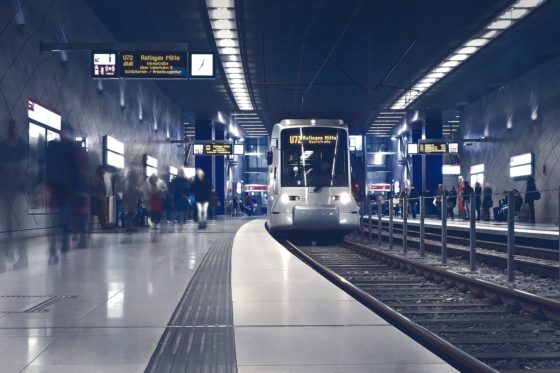
Artificial Intelligence now exists in more than 80% of the digital interactions we have. With almost all progress in science, business and even academia now being tied to the digital evolution, AI is pervading our lives like never before. One example of a place in which AI is making a big difference is at the humble train station, somewhere that perhaps we would not initially see as a hotbed of AI digital innovation.
Autonomous Transportation
In Newcastle, Australia, digital software company 4Tel is ahead of even Silicon Valley in designing the next generation of autonomous train software – and it’s even being applied to the process of driving vehicles themselves. Progress has been faster on rail than road and, so far, at least, there have not been any of the same headline grabbing accidents that have been seen on the roads – such as Ubers recent regrettable run-in with a pedestrian. The goals are to improve safety and even the reliability of the train system by augmenting human drivers with AI.
Infrastructure Performance And Health
In the UK, a different approach is being used to remote monitor the health and reliability of the signaling system that directs and ensures the safety of every train. Current plans both underpin the fundamental capabilities of the country’s rail network by operating on an outdated ‘break/fix’ structure to maintenance, under which crews simply wait until the system stops before they repair it.
5G to provide ‘big data’ on network infrastructure
5G networks are just around the corner and promise cheap sensors linked with affordable mobile data plans, cheap radio arrays (for a phone’s connection), as well as batteries with a lifespan of up to 10 years. That means almost anything in a train carriage – from the number of people inside, to the temperature, to the speed and even the noise level – can be remotely measured and optimized.
Bringing it all together
The roll out of AI solutions in trains is just one example of how Artificial Intelligence can help city infrastructure. In many instances it can help to improve safety, which is clearly the primary consideration for every rail network operator in the world.
Consider too the efficiency gains, customer satisfaction improvements and cost reductions. Less reliance on human train drivers means more trains on time – more of the time. Proactive track and signal maintenance will make best use of the infrastructure that railways have already invested in while simultaneously reducing the cost of repairs.
Estimates suggest that we will not have to wait long for these improvements to arrive. Even with the substantial size of any train investment project and the complexity inherent in dealing with massive technology upgrades of a working operational system such as a train network, even the most pessimistic observers say each of these innovations is likely to be delivered in the next decade or two at most.
In the future, if pundits are to be believed, AI will be involved even before the train lines are placed. AI systems will be designing systems with AI inside them, a self-reinforcing virtuous loop. Don’t underestimate the humble train. It could be one of the biggest winners in the new AI enabled world.